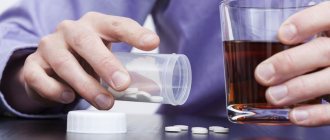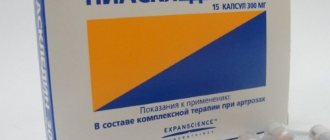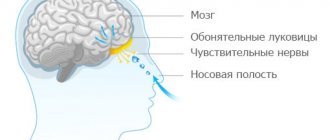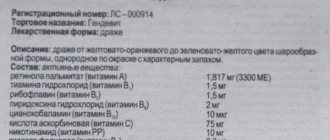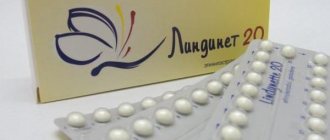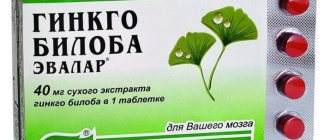Combination antihypertensive drugs usually contain two main active ingredients, most often an angiotensin-converting enzyme inhibitor and a diuretic.
The combined effect of these substances leads to a stable hypotensive effect and makes it possible to use monotherapy, that is, not to use any other means to lower blood pressure.
This, perhaps, can be called an advantage of such antihypertensive drugs in combinations as Renipril GT, Berlipril plus, Indapamide-Perindopril and others. What other properties do drugs of this pharmacological group, in particular Renipril GT, have? Instructions for use will be the main topic of the material presented below.
Composition and differences from Renipril
The components of the combination drug Renipril GT according to the instructions for use are two chemical compounds:
- enalapril maleate is an angiotensin-converting enzyme blocker that provides a hypotensive effect;
- hydrochlorothiazide is a diuretic that also has mild antihypertensive properties.
The presence of a second active component is what distinguishes this combination medication from the single-component ACE inhibitor Renipil, consisting of the prodrug enalapril. As for the auxiliary components of both drugs, they are almost the same and contain milk sugar, which should be noted to patients with lactose intolerance.
How does it work?
The antihypertensive effect of Renipril GT is manifested due to the properties of its constituent components.
Enalapril maleate
Enalapril is commonly called a prodrug - a precursor or base of an antihypertensive substance called enalaprilat. It is transformed from enalapril through the process of hydrolysis and inhibits the enzyme that converts angiotensin I into angiotensin II, a hormone that causes vasoconstriction, that is, vasoconstriction. In addition, enalaprilat enhances the action of bradykinin with the release of prostaglandins, and also reduces the production of aldosterone, a corticosteroid hormone of the adrenal cortex that affects vascular tone.
Hydrochlorothiazide
This substance accelerates the evacuation of Na and Cl ions, affecting the activity of the distal renal tubules. Due to the increased evacuation of fluid and Na, the BCC (circulating blood volume) decreases and blood pressure decreases, and cardiac output also decreases.
Long-term use of hydrochlorothiazide reduces total peripheral vascular resistance, which helps stabilize blood pressure.
Classification of ACE inhibitors by chemical structure
Renipril GT tablets No. 20
Compound
Active ingredients: enalapril maleate - 10 mg, hydrochlorothiazide - 12.5 mg. Excipients: potato starch - 59.3 mg, lactose monohydrate - 111.5 mg, povidone (low molecular weight medical polyvinylpyrrolidone) - 4 mg, colloidal silicon dioxide (Aerosil) - 0.7 mg, calcium stearate (calcium stearate) - 2 mg.
Pharmacokinetics
Cmax of enalapril in blood plasma is achieved after 3-4 hours.
Eating does not affect the absorption of Renipril GT.
Indications for use
Arterial hypertension (if combination therapy is necessary).
Contraindications
- severe liver dysfunction;
- conditions after kidney transplantation;
- severe renal dysfunction (creatinine clearance less than 0.5 ml/sec or serum creatinine more than 265 µmol/l or more than 3 mg/dl);
- history of angioedema;
- porphyria;
- primary hyperaldosteronism;
- childhood;
- pregnancy (especially the 2nd and 3rd trimesters);
- lactation (breastfeeding);
- hypersensitivity to the components of the drug;
- hypersensitivity to sulfonamides.
Directions for use and doses
The dose of the drug and duration of treatment are determined individually.
The initial dose of the drug is 1-2 tablets/day, regardless of food intake.
The dose should always be adjusted depending on the patient's individual response to treatment. The maximum daily dose is 4 tablets.
If the patient is already receiving diuretics, it is recommended to discontinue treatment or reduce the dose of the diuretic at least 2-3 days before starting therapy with Renipril GT, in order to avoid a sharp decrease in blood pressure.
Storage conditions
The drug should be stored out of the reach of children, in a dry place, protected from light, at room temperature.
Best before date
3 years. Do not use after the expiration date stated on the package.
special instructions
The drug should not be prescribed to patients with bilateral renal artery stenosis or stenosis of the artery of a solitary kidney.
The drug should be prescribed with caution to patients with impaired renal function.
In patients receiving allopurinol (or combinations with allopurinol), cytostatics, immunosuppressants or corticosteroids for systemic use, peripheral blood counts should be regularly monitored, as there is a risk of developing leukopenia, anemia or pancytopenia.
It is necessary to prescribe Renipril® HT with caution to patients receiving oral hypoglycemic agents or insulin, since hydrochlorothiazide weakens the effect of hypoglycemic drugs, and enalapril may enhance it, which may require dose adjustment of hypoglycemic agents.
In patients with severe heart failure and hyponatremia, severe renal failure, left ventricular hypertrophy or dysfunction, and especially in patients in a state of hypovolemia caused by taking diuretics, a salt-free diet, diarrhea, vomiting or hemodialysis, arterial hypotension may develop after taking the first tablet of Renipril GT .
The drug should be prescribed with caution to patients with severe aortic stenosis or with idiopathic subaortic muscular stenosis and generalized atherosclerosis.
During the treatment period, it is necessary to periodically monitor the concentration of electrolytes, urea, creatinine, the activity of liver transaminases in the blood serum, as well as the protein content in the urine.
Before studying the function of the parathyroid glands, treatment with the drug should be discontinued.
Description
Antihypertensive drug.
Dosage form
Tablets are white or white with a creamy tint, flat-cylindrical, scored and chamfered; marbling is allowed on the surface of the tablets.
Use in children
Contraindication: children's age.
Action
Combined antihypertensive drug.
Thanks to the combination of enalapril maleate and hydrochlorothiazide, Renipril® GT has a stronger antihypertensive effect than either component alone. Reduces potassium loss. The duration of action of Renipril GT after a single oral dose is about 24 hours.
Side effects
From the central nervous system and peripheral nervous system: possible dizziness, headache, feeling of fatigue.
From the cardiovascular system: arterial hypotension, orthostatic hypotension are possible.
From the digestive system: possible nausea, increased activity of liver transaminases in the serum; rarely - vomiting, diarrhea.
Allergic reactions: rarely - skin rash, angioedema.
From the urinary system: increased levels of urea and creatinine.
From the respiratory system: dry cough is possible.
From the hematopoietic system: rarely - anemia, thrombocytopenia, leukopenia, agranulocytosis.
Other: muscle cramps are possible.
Adverse reactions are usually mild and transient and, as a rule, do not require discontinuation of the drug.
Use during pregnancy and breastfeeding
Renipril® GT is contraindicated during pregnancy and lactation (breastfeeding).
Interaction
- When taken simultaneously with other antihypertensive drugs, tricyclic antidepressants, phenothiazines, and ethanol, the antihypertensive effect of Renipril GT is enhanced.
- Analgesics-antipyretics and NSAIDs, increased salt content in food and the simultaneous administration of cholestyramine or colestipol weaken the effect of Renipril GT.
- The simultaneous use of Renipril® GT and lithium preparations may cause lithium intoxication by reducing lithium clearance.
- Concomitant use of potassium-sparing diuretics (spironolactone, amiloride, triamterene) or additional potassium intake may lead to hyperkalemia.
- Concomitant use of allopurinol, cytostatics, immunosuppressants or systemic corticosteroids can cause leukopenia, anemia or pancytopenia; simultaneous use of cyclosporine can lead to the development of renal failure.
- Simultaneous use of sulfonamides or hypoglycemic agents - sulfonylurea derivatives can cause allergic reactions (cross-allergy is possible).
- Digitalis preparations should be co-administered with caution as their toxicity may be increased by hypovolemia, hypokalemia and hypomagnesemia.
- Concomitant use of corticosteroids increases the risk of hypokalemia.
- The risk of developing arterial hypotension increases during general anesthesia or with simultaneous use of non-depolarizing muscle relaxants (for example, tubocurarine).
Overdose
Symptoms: most often - increased diuresis, severe arterial hypotension with bradycardia or other heart rhythm disturbances, convulsions, paresis, clouding of consciousness, renal failure, decreased levels of electrolytes in the blood serum, impaired acid-base balance.
Treatment: gastric lavage, activated charcoal and laxatives are recommended. It is necessary to monitor blood pressure, pulse, respiratory function, urea, creatinine and electrolytes in the blood serum, as well as diuresis. In case of arterial hypotension, a 0.9% sodium chloride solution is administered. Hemodialysis may be used.
Impact on the ability to drive vehicles and operate machinery
When driving vehicles or working with machinery, the possibility of dizziness or weakness should be taken into account (see Side effects).
Instructions for use
To get the most complete idea about the medicine in question, you should carefully read what is written about Renipril GT in the instructions for use.
This guide to the use of the medication will help answer such important questions as the method of application and dose, in what cases the drug is prescribed, how it should be taken and whether it causes unwanted effects.
When is it used?
According to the instructions for use, Renipril GT is prescribed to patients with hypertension, the treatment of which requires the use of combination medications.
Dosages
On the rules for using the drug Renipril GT, the instructions for use provide the following information:
- a combination medicine such as Renipril GT should not be used at the beginning of therapy for hypertension;
- Initially, you should select the dose of each component separately, check the effectiveness of the action, and only then switch to therapy with a combination drug;
- the dosage should be selected individually in each case;
- The patient should not increase the dosage at his own discretion without first consulting a physician.
The standard dose is 1 tablet per day, at approximately the same time.
How to use?
Studies have shown that the presence of food in the digestive organs does not affect the absorption of enalapril, which makes it possible to take this medicine regardless of meals.
- The Renipril GT tablet, according to the instructions for use, should be taken with water, some time after meals or simultaneously with meals, preferably in the morning.
- If you miss a pill and there is a lot of time left until the next one, you should take the missed dose as soon as possible.
- If a dose is missed and there are only a few hours left before the next one, you should wait until the time to take it and take no more than one dose.
- It is not recommended to increase the dose. If the therapeutic effect is unsatisfactory, it is more advisable to change the treatment regimen, for example, add another antihypertensive drug.
- Patients taking diuretics are advised to reduce the dosage or completely stop taking them.
To avoid the development of side effects from the kidneys, it is necessary to conduct a study of their function before starting treatment.
Side effects
The most common undesirable effects from taking Renipril GT according to the instructions for use are:
- general weakness;
- heartbeat;
- heart rhythm disturbances;
- orthostatic hypotension;
- dry mouth;
- dyspeptic disorders;
- unproductive cough;
- bronchospasm;
- disorders of renal and reproductive functions.
Allergic reactions are also possible in the form of angioedema of various parts of the body, skin rashes, itching, nervous system disorders, and changes in laboratory parameters.
Renipril
Renipril is a domestic generic version of the classic antihypertensive drug enalapril. The mechanism of action of renipril (not to be confused with the original enalapril - the Dutch drug Renitec) is due to its ability to suppress the activity of angiotensin-converting enzyme (ACE), which reduces the concentration of the most powerful vasoconstrictor (it's no joke - 40 times stronger than norepinephrine) - angiotensin II. At the same time, the drug stimulates the synthesis of kinins and prostacyclin, which have a vasodilating effect. Enalapril (renipril) is a prodrug that must be hydrolyzed to form enalaprilat after entering the body before taking active action. Renipril also has a mild diuretic effect due to the suppression of aldosterone formation. Along with a decrease in blood pressure, the drug also reduces pre- and afterload on the heart muscle against the background of heart failure, stimulates pulmonary circulation, improves respiratory function, reduces renal vascular resistance, which leads to normalization of renal circulation.
After oral administration, the drug is absorbed by approximately 60%, regardless of the degree of intestinal fullness. The site of formation of active enalaprilat is the liver. The maximum concentration of the active substance in the blood is achieved 1 hour after administration, and its metabolite - enalaprilat - after 3-4 hours. Renipril can be taken regardless of diet. For essential (primary) arterial hypertension, the starting dose of the drug is 10-20 mg (1-2 tablets) per day.
Subsequently, the dose is adjusted individually. Moderate hypertension can be treated with a dose of 10 mg per day. As for the maximum daily dose, 80 mg is the threshold that is not recommended to be crossed. For renovascular hypertension (persistent increase in blood pressure caused by impaired renal circulation), renipril is indicated in smaller doses: 5 mg as a single (initial) dose and 20 mg as the maximum daily dose. For the treatment of heart failure, the drug is prescribed at a dose of 2.5 mg, followed by a gradual increase to 10-20 mg (the daily dose is taken at a time or divided into 2 doses). The duration of the medication course is determined by the effectiveness of the treatment. If the patient's blood pressure begins to decrease too rapidly, the dose of the drug should be reduced. Renipril can be used as a single agent of antihypertensive therapy or in various pharmacological combinations. Patients with impaired renal function should be content with lower doses or extend the intervals between doses. In persons with autoimmune diseases, insufficiency of liver or kidney function, as well as dehydration and loss of electrolytes, the drug should be used with extreme caution. If treatment with renipril was preceded by a pharmacotherapeutic course, including the use of diuretics, then, due to the risk of developing hypotension, it is necessary to restore the water-electrolyte balance in the body. Long-term treatment with renipril involves regular monitoring of peripheral blood parameters.
Reviews from doctors about the drug Renipril GT
Practicing cardiologists generally positively assess the effectiveness of Renipril GT. Reviews from doctors are based on many years of observations of patients taking this medication regularly.
- The action of the drug is called fast and effective.
- Most patients experience stabilization of blood pressure and improvement in general well-being.
- Blood circulation improves, symptoms of heart failure are smoothed out.
Although doctors note rare cases of side effects. This is mainly a dry cough and dry mouth, as well as allergic skin rashes. But, if Renipril GT was prescribed by a doctor and taken according to the instructions for use, such phenomena are usually rare.
Find out what consequences hypertension can lead to in this article.
Patient reviews
Patients themselves evaluate the effect of this ACE inhibitor mostly positively.
- There are reports of the development of side effects in the form of skin itching and a small rash, however, after taking antihistamines, the side symptoms quickly disappeared and patients calmly continued therapy with the drug Renipril GT.
- Reviews from patients with chronic heart failure also confirm the positive effect of the drug on the course of this disease. While taking Renipril GT, their well-being and endurance of physical activity significantly improved.
- Only a small proportion of patients reported that they were not suitable for the ACE inhibitor Renipril GT. The instructions for use contain a solid list of contraindications for which treatment with this medicine is impossible.
All these issues - the admissibility of treatment, the likelihood of side effects - should be calculated in advance, before starting ACEI therapy.
Renipril® HT
During therapy with Renipril® GT, the patient's condition should be regularly monitored, especially at the beginning of treatment.
Arterial hypotension and
electrolyte imbalance
When using antihypertensive drugs, some patients may develop symptomatic arterial hypotension (even several hours after taking the first dose). Patients should be monitored for clinical signs of fluid and electrolyte imbalance, such as dehydration, hyponatremia, hypochloremic alkalosis, hypomagnesemia, or hypokalemia, which may occur with concomitant diarrhea or vomiting. In such patients, monitoring of serum electrolytes is necessary. The drug should be prescribed with extreme caution to patients with coronary artery disease or cerebrovascular diseases, in whom a pronounced decrease in blood pressure can lead to myocardial infarction and/or stroke.
If arterial hypotension develops, the patient should be laid down, legs elevated and, if necessary, a 0.9% sodium chloride solution should be administered. Transient arterial hypotension when taking Renipril® GT is not a contraindication to its further use. After normalization of blood pressure and replenishment of blood volume, therapy can be resumed in lower doses or each of the components of the drug can be used in monotherapy.
Aortic or mitral stenosis/HOCM
As with all drugs that have a vasodilating effect, ACE inhibitors should be administered with caution to patients with left ventricular outflow tract obstruction.
Renal dysfunction
The drug should not be prescribed to patients with renal failure (creatinine clearance less than 80 ml/min) until the selection of individual components of the drug shows that the required doses are present in this dosage form. In some patients with arterial hypertension, without any evidence of a history of kidney disease, when treated with enalapril in combination with a diuretic, a slight and transient increase in plasma urea and serum creatinine concentrations may occur; in such cases, treatment with Reniprilk® GT should be discontinued . In the future, it is possible to resume therapy in lower doses or each of the components of the drug can be used in monotherapy.
In some patients with bilateral renal artery stenosis and stenosis of the artery of a solitary kidney, when treated with ACE inhibitors, an increase in the concentration of urea in the blood plasma and creatinine in the serum was observed, these changes were usually reversible, as a rule, the indicators returned to normal after cessation of therapy. This pattern of changes is most likely in patients with impaired renal function.
When using ACE inhibitors for renovascular arterial hypertension, there is also a high risk of a pronounced decrease in blood pressure, so treatment in such patients begins with a low dose of Renipril® GT under the supervision of a physician.
Liver failure
Rarely, when treated with ACE inhibitors, a syndrome is observed that begins with cholestatic jaundice or hepatitis, which progresses to fulminant liver necrosis, sometimes with death. The mechanism of this syndrome has not been studied. Patients who develop jaundice or a marked increase in the activity of liver transaminases during treatment with ACE inhibitors should discontinue the ACE inhibitors and prescribe appropriate auxiliary therapy. The patient must be under medical supervision.
Surgery/general anesthesia
During major surgery or general anesthesia with the use of drugs that cause an antihypertensive effect, enalaprilat blocks the formation of angiotensin II caused by the compensatory release of renin. If a pronounced decrease in blood pressure develops, explained by a similar mechanism, it can be corrected by increasing the volume of blood volume. It is necessary to warn the surgeon/anesthesiologist that the patient is taking ACE inhibitors.
Hypersensitivity reactions/angioedema
When using ACE inhibitors, including enalapril, in rare cases and during any period of therapy, the development of angioedema of the face, upper and lower extremities, lips, mucous membranes, tongue, vocal folds and/or larynx may be observed (see section “Adverse reactions”). action"). If symptoms appear, the drug should be stopped immediately and the patient should be observed until signs of edema completely disappear. If the swelling affects only the face and lips, it usually resolves on its own, although antihistamines may be used to treat symptoms.
Angioedema, accompanied by swelling of the larynx, can be fatal. Swelling of the tongue, vocal folds, or larynx can lead to airway obstruction. When such symptoms appear, emergency treatment is required, including subcutaneous administration of epinephrine (adrenaline) and/or ensuring airway patency. The patient should be under medical supervision until symptoms disappear completely and permanently.
In patients of negroid
races taking ACE inhibitors, angioedema developed more often than in patients of other races.
Patients with a history of angioedema not associated with taking ACE inhibitors may be at greater risk of developing angioedema during therapy with ACE inhibitors (see section "Contraindications").
In patients taking ACE inhibitors and mammalian target of rapamycin (mTOR) inhibitors, estramustine, racecadotril, gliptins, an increased risk of developing angioedema was observed (see section "Interaction with other drugs").
In patients taking thiazide diuretics, hypersensitivity reactions may occur even in the absence of a history of allergic reactions or bronchial asthma. Relapses and worsening severity of systemic lupus erythematosus have been reported in patients taking thiazide diuretics.
In rare cases, intestinal edema develops during therapy with ACE inhibitors. In this case, patients experience abdominal pain as an isolated symptom or in combination with nausea and vomiting, in some cases without previous angioedema of the face and with normal levels of C1-esterase. The diagnosis was made using abdominal computed tomography, ultrasound, or surgery. Symptoms disappeared after stopping the ACE inhibitors. Therefore, in patients with abdominal pain receiving ACE inhibitors, when carrying out differential diagnosis, it is necessary to take into account the possibility of developing angioedema of the intestine (see section “Side effects”).
Anaphylactoid reactions during desensitization with an allergen from Hymenoptera venom
In rare cases, patients taking ACE inhibitors have developed life-threatening anaphylactoid reactions during desensitization with hymenoptera venom allergen. To avoid corresponding reactions, ACE inhibitor therapy should be temporarily discontinued before each desensitization therapy session.
Anaphylactoid reactions during low-density lipoprotein (LDL) apheresis
In rare cases, life-threatening anaphylactoid reactions may occur in patients receiving ACE inhibitors during LDL apheresis using dextran sulfate. To prevent an anaphylactoid reaction, ACE inhibitor therapy should be temporarily discontinued before each LDL apheresis procedure.
Patients on hemodialysis
It should be borne in mind that when treated with Renipril® GT in patients who are indicated for hemodialysis, the development of anaphylactoid reactions (swelling of the face, flushing of the skin, marked decrease in blood pressure, shortness of breath) is possible due to the use of high-throughput filter membranes consisting made of polyacrylonitrile (for example, high-flow membranes AN69®). It is recommended to use other types of dialysis membranes for hemodialysis or other classes of antihypertensive agents.
Kidney transplant
There is no experience with the use of enalapril in patients after kidney transplantation. Treatment with enalapril in patients after kidney transplantation is not recommended.
Neutropenia/agranulocytosis
There are reports of the development of neutropenia/agranulocytosis, thrombocytopenia and anemia in patients receiving treatment with ACE inhibitors. The risk of neutropenia likely depends on the dose and the clinical condition of the patient. Neutropenia may occur more often in patients with reduced renal function, especially if there is a concomitant connective tissue disease (systemic lupus erythematosus, scleroderma) or when treated with immunosuppressants, allopurinol or procainamide, as well as a combination of these complicating risk factors. Some of these patients developed severe infectious diseases, which in some cases did not respond to intensive antibiotic therapy. When using enalapril in such patients, it is advisable to carry out monitoring of blood leukocytes and a complete blood count before treatment, every 2 weeks in the first three months of treatment, and then regularly. The patient should be strongly advised to report any symptom of an infectious disease (eg, sore throat, fever) to the doctor; in this case, the leukocyte blood count should be monitored. If neutropenia (less than 1000/mm3) is suspected or detected, which is reversible, the drug Renipril® GT and other drugs taken simultaneously should be discontinued (see section “Interaction with other drugs”).
Double blockade of the RAAS
Cases of hypotension, syncope, stroke, hyperkalemia and renal dysfunction (including acute renal failure) have been reported in susceptible patients, especially when used concomitantly with drugs that affect this system. Therefore, double blockade of the RAAS by combining an ACE inhibitor with an ARA II or aliskiren is not recommended.
Combination with aliskiren is contraindicated in patients with diabetes mellitus and/or moderate or severe renal impairment (GFR less than 60 ml/min/1.73 m2 body surface area) (see sections “Contraindications” and “Interaction with other drugs”) . The simultaneous use of ACE inhibitors and ARB II is contraindicated in patients with diabetic nephropathy and is not recommended in other patients.
Lithium preparations
The simultaneous use of lithium, enalapril and diuretics is not recommended (see section “Interaction with other drugs”).
Cough
Cough may occur during therapy with ACE inhibitors. As a rule, this is a dry cough, is permanent and disappears after stopping treatment. Cough associated with the use of ACE inhibitors should be considered in the differential diagnosis of cough.
Hyperkalemia
(see section "Interaction with other drugs")
During treatment with Renipril® GT, an increase in potassium levels in the blood serum is possible, especially in patients with chronic renal failure, diabetes mellitus, with simultaneous use of potassium-sparing diuretics (for example, spironolactone, eplerenone, amiloride, triamterene), potassium supplements or potassium-containing salt substitutes, as well as in patients taking other drugs that lead to an increase in potassium levels in the blood serum (for example, heparin); this effect is usually attenuated by thiazide diuretics due to increased potassium excretion. If the simultaneous use of the above drugs is necessary, then regular monitoring of potassium levels in the blood serum is recommended (see section “Interaction with other drugs”).
Metabolic and endocrine effects
Thiazide therapy may impair glucose tolerance. It may be necessary to adjust the dose of insulin or oral hypoglycemic agents (see section “Interaction with other drugs”). When treated with thiazides, latent diabetes mellitus can manifest itself.
Thiazides can reduce the excretion of calcium by the kidneys and cause a transient increase in serum calcium without visible disturbances in its metabolism. Severe hypercalcemia may be a sign of latent hyperparathyroidism. Due to the effect of thiazides on calcium metabolism, their use may distort the results of testing the function of the parathyroid glands, therefore, before testing the function of the parathyroid glands, the thiazide diuretic should be discontinued.
Increases in plasma cholesterol and triglyceride concentrations may also be associated with thiazide diuretic therapy.
In some patients, therapy with thiazide diuretics may lead to the development of hyperuricemia and/or exacerbation of gout. However, enalapril may increase renal excretion of uric acid and thereby reduce the hyperuricemic effect of hydrochlorothiazide.
Liver diseases
Thiazide diuretics should be used with caution in patients with impaired liver function and/or progressive liver disease, since even small changes in water and electrolyte balance can lead to hepatic coma.
Anti-doping test
Hydrochlorothiazide may cause a positive result during doping control.
Acute myopia and closed-angle glaucoma
Hydrochlorothiazide, being a sulfonamide derivative, can cause an idiosyncratic reaction in the form of acute transient myopia and acute secondary angle-closure glaucoma. Symptoms include: sudden loss of visual acuity or eye pain, usually occurring within hours to weeks of starting hydrochlorothiazide therapy. If left untreated, acute angle-closure glaucoma can lead to permanent vision loss. Treatment: Stop taking hydrochlorothiazide as soon as possible. If intraocular pressure remains uncontrolled, emergency medical treatment or surgery may be required. Risk factors for the development of acute angle-closure glaucoma are: a history of an allergic reaction to sulfonamides or penicillin.
Non-melanoma skin cancer
Two pharmacoepidemiological studies using data from the Danish National Cancer Registry demonstrated an association between hydrochlorothiazide use and an increased risk of non-melanoma skin cancer (NMSC) basal cell carcinoma and squamous cell carcinoma. The risk of developing NMSC increased with increasing total (cumulative) dose of hydrochlorothiazide. A possible mechanism for the development of NMSC is the photosensitizing effect of hydrochlorothiazide.
Patients taking hydrochlorothiazide as monotherapy or in combination with other drugs should be aware of the risk of developing NMSC. It is recommended that such patients undergo regular skin examination to identify any new suspicious lesions as well as changes in existing skin lesions.
Any suspicious skin changes should be reported to your doctor immediately. Suspicious areas of skin should be examined by a specialist. To clarify the diagnosis, histological examination of skin biopsies may be required.
To minimize the risk of developing NMSC, patients should be advised to follow preventive measures, such as limiting exposure to sunlight and UV rays, and using appropriate protective equipment.
In patients with a history of non-melanoma skin cancer, it is recommended to reconsider the use of hydrochlorothiazide.

